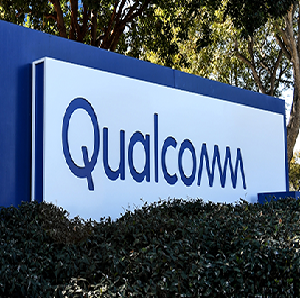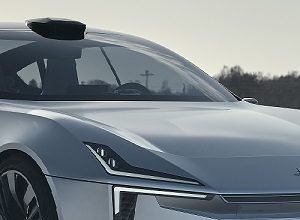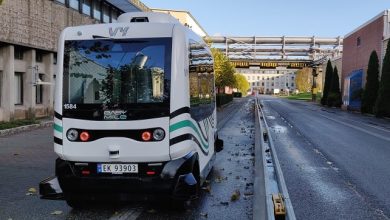San Diego regional proving ground joins efforts with Qualcomm to launch C-V2X program in San Diego

Qualcomm Technologies, Inc. and the San Diego Regional Proving Grounds (SDRPG) announced the launch of a new C-V2X direct communication program for California. C-V2X is a direct communication technology designed to offer vehicles low latency communications for Vehicle-to-Vehicle (V2V), Vehicle-to-Roadside Infrastructure (V2I) and Vehicle-to-Pedestrian (V2P) without the involvement of a cellular network, or cellular network subscription, by operating on designated and harmonized 5.9 GHz ITS spectrum. SDRPG, which is composed of the California Department of Transportation (Caltrans District 11), the City of Chula Vista and the San Diego Association of Governments (SANDAG), and Qualcomm Technologies, designed the program to facilitate use case research and testing for vehicle communications in realistic operating conditions. The public agencies aim to utilize the project to assess C-V2X capabilities on San Diego roadways by conducting advanced technology testing, as well as demonstrate the technology’s potential to improve automotive safety and traffic efficiency.
Qualcomm Technologies is one of SDRPG’s private sector affiliates working with the public sector partners to advance technology testing and readiness for implementation. The program spans across a three-mile corridor with commercial C-V2X roadside units (RSUs), featuring the Qualcomm® 9150 C-V2X Platform, installed along the highways and at traffic light intersections off of Interstate 805 and California State Route 52 highways between Sorrento Valley and Kearny Mesa. Vehicles utilized in the project are provided by Caltrans and are equipped with commercial C-V2X onboard units (OBUs) featuring the Qualcomm® 9150 C-V2X Platform. This C-V2X program in California is currently taking place and is expected to last through the second half of this year. While C-V2X is designed to be globally compatible with 5G and compliment other Advanced Driver Assistance Systems (ADAS), such sensors, cameras, radar and LIDAR, the San Diego C-V2X project will focus solely on the benefits and reliability of vehicle communication technology, utilizing vehicle-to-infrastructure (V2I) use cases, such as speed limits, roadside warnings, closures, and travel times. The program joins Colorado and Virginia, who have announced limited deployments for C-V2X technology for each of their states.
To support the growing C-V2X ecosystem, the program will also be made open to automakers and road operators who have interest in utilizing the project platform for testing or to explore the potential for cost-efficient benefits associated with embedded cellular technology in vehicles, and synergies between the deployment of cellular base stations and roadside infrastructure.
“As a member of the San Diego Regional Proving Ground, the City of Chula Vista strongly supports next-generation vehicle communication technologies like C-V2X as we look to improving vehicle safety, traffic efficiency and toward autonomous driving,” said Chula Vista Director of Engineering Bill Valle. “We look forward to this joint effort with Qualcomm Technologies to help inform policies and produce new systems that are expected to result in a safer and more efficient transportation network for the region.”
“Our work with the San Diego Regional Proving Grounds organization to help deploy its C-V2X program serves as another significant milestone in our continued advancement of connected driving technologies,” said Jim Misener, senior director, product management, Qualcomm Technologies, Inc. “Working with roadside infrastructure owner operators to jointly explore and show benefits in end-to-end transportation use cases where C-V2X will not only demonstrate the technology’s impact for the safety of vehicles, drivers, and passengers locally, but showcase its statewide and international impact with its ability to reduce collisions and incidents.”
“The strategic coordination with Caltrans, the City of Chula Vista, and Qualcomm Technologies is critical to advancing vehicle communication testing in California,” said SANDAG Chair and Poway Mayor Steve Vaus. “Successes and lessons learned from the C-V2X installation is the vital data we need to incorporate these emerging concepts into the transportation planning that SANDAG is doing for the region. In particular, testing like this can determine how technology will be incorporated into the regional transportation plan.”
C-V2X direct communication mode is designed to offer vehicles low latency communications directly with other vehicles, roadside infrastructure and pedestrians without the involvement of a cellular network, or cellular network subscription, by operating in the designated and harmonized 5.9 GHz ITS spectrum, which the Federal Communications Commission (FCC) has proposed to allocate for C-V2X. In the direct communications mode, C-V2X also facilitates the ability of vehicles to share information without the involvement of the cellular network, supporting safety conscious applications while offering driver anonymity. Complementary to other Advanced Driver Assistance Systems (ADAS) sensors, such as cameras, radar, and LIDAR, C-V2X technology is designed to support 360-degree non-line-of-sight (NLOS) awareness, and is designed to extend a vehicle’s ability to see, hear, and understand the environment down the road, at blind intersections, or in bad weather conditions.





